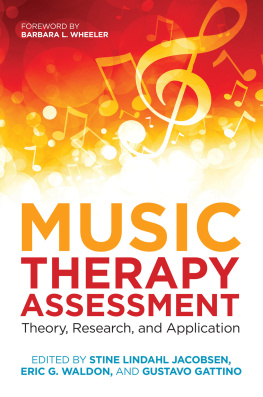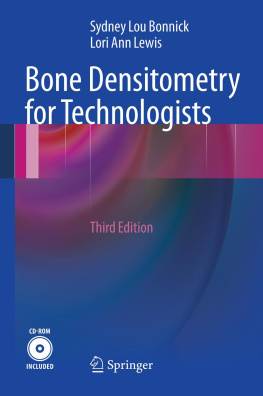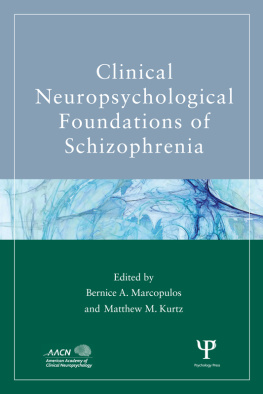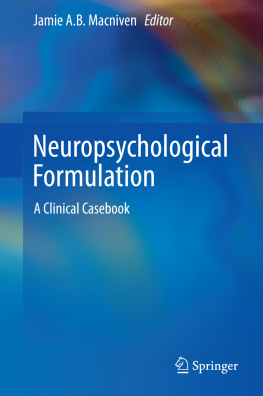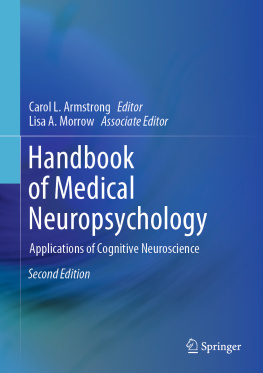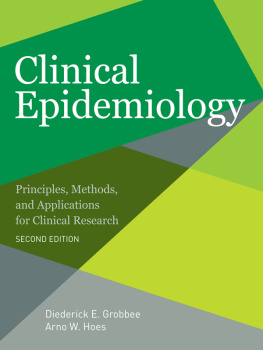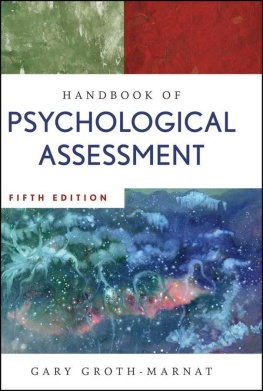Neuropsychological Assessment
NEUROPSYCHOLOGICAL ASSESSMENT
Fifth Edition
Muriel Deutsch Lezak
Diane B. Howieson
Erin D. Bigler
Daniel Tranel


Oxford University Press, Inc., publishes works that further
Oxford Universitys objective of excellence
in research, scholarship, and education.
Oxford New York
Auckland Cape Town Dar es Salaam Hong Kong Karachi
Kuala Lumpur Madrid Melbourne Mexico City Nairobi
New Delhi Shanghai Taipei Toronto
With offices in
Argentina Austria Brazil Chile Czech Republic France Greece
Guatemala Hungary Italy Japan Poland Portugal Singapore
South Korea Switzerland Thailand Turkey Ukraine Vietnam
Copyright 1976, 1983, 1995, 2004, 2012 by Oxford University Press, Inc.
Published by Oxford University Press, Inc.
198 Madison Avenue, New York, New York 10016
www.oup.com
Oxford is a registered trademark of Oxford University Press
All rights reserved. No part of this publication may be reproduced,
stored in a retrieval system, or transmitted, in any form or by any means,
electronic, mechanical, photocopying, recording, or otherwise,
without the prior permission of Oxford University Press.
Library of Congress Cataloging-in-Publication Data
Neuropsychological assessment / Muriel D. Lezak [et al.]. 5th ed.
p. cm.
Includes bibliographical references and index.
ISBN 9780195395525
1. Neuropsychological tests. I. Lezak, Muriel Deutsch.
RC386.6.N48L49 2012
616.80475dc23
2011022190
Dedicated in gratitude for the loving support from our spouses, John Howieson, Jan Bigler, and Natalie Denburg; and in memory of Sidney Lezak whose love and encouragement made this work possible.
Preface
Direct observation of the fully integrated functioning of living human brains will probably always be impossible.
M.D. Lezak, 1983, p. 15
What did we know of possibilities, just a little more than a quarter of a century ago? The black box of
classical psychology is no longer impenetrable as creative neuroscientists with ever more revealing neuroimaging techniques are devising new and powerful ways of finding windows into the black box. In neuroimaging we can now trace neural pathways, relate cortical areas to aspects of thinking and feelingeven see free association in the default stateand are discovering how all this is activated and integrated in complex, reactive, and interactive neural systems. We may yet uncover the nature of (self- and other-) consciousness and how synaptic interconnections, the juices that flow from them, and the myriad other ongoing interactive neural processes get translated into the experience of experiencing. We can never again say never in neuroscience.
Yet, as entrancing and even astonishing as are the findings the new technologies bring to neuroscience, it is important to be mindful of their roots in human observations. As these technologically enhanced observations of the brain at work open the way for new insights about brain function and its behavioral correlates they also confirm, over and over again, the foundational hypotheses of neuropsychologyhypotheses generated from direct observations by neuropsychologists and neurologists who studied and compared the behavior of both normal and brain impaired persons. These foundational hypotheses guide practitioners in the clinical neurosciences today, whether observations come from a clinicians eyes and ears or a machine. In the clinic, observations of brain function by technological devices enhance understanding of behavioral data and sometimes aid in prediction, but cannot substitute for clinical observations.
When the earliest neuroimaging techniques became available, some thought that neuropsychologists would no longer be needed as it had become unnecessary to improve the odds of guessing a lesion site, a once important task for neuropsychologists. Todays advanced neuroimaging techniques make it possible to predict with a reasonable degree of accuracy remarkably subtle manifestations, such as the differences between socially isolated brain injured patients who will have difficulty in social interactions although actively seeking them, versus those who may be socially skilled but lack incentive to socialize. Yet this new level of prediction, rather than substituting for human observation and human intervention, only raises more questions for experienced clinical neuroscientists: e.g., what circumstances exacerbate or alleviate the problem? what compensatory abilities are available to the patient? is the patient aware of the problem and, if so, can this awareness be used constructively? is this a problem that affects employability and, if so, how? and so on. Data generated by new neurotechnologies may help identify potential problem areas: neuropsychologists can find out how these problems may play out in real life, in human terms, and what can be done about them.
Thus, in the fifth incarnation of Neuropsychological Assessment, we have tried to provide a wide-ranging report on neuropsychology as science and as a clinical specialty that is as relevant today as it was when it first appeared 35 years ago. Certainly what is relevant in 2012 is somewhat different from 1976 as the scope of activities and responsibilities of neuropsychologists has enlarged and the knowledge base necessary for clinical practice as well as for research has expanded exponentially.
Three major additions distinguish the first and the fifth editions of Neuropsychological Assessment. Most obvious to the experienced neuropsychologist is the proliferation of tests and the wealth of readily available substantiating data. Second, a book such as this must provide practically useful information for neuropsychologists about the generationsyes, generationsof neuroimaging techniques that have evolved in the past 30 years. Further, especially exciting and satisfying is confirmation of what once was suspected about the neural organization underlying brain functions thanks to the marriage of sensitive, focused, clinical observations with sensitive, focused, neuroimaging data. In this edition we convey what is known about the enormity of interwoven, interactive, and interdependent complexities of neuronal processing as the brain goes about its business and how this relates to our human strengths and frailties.
What remains the same in 2012 as it was in 1976 is the responsibility of clinicians to treat their patients as individuals, to value their individuality, and to respect them. Ultimately, our understandings about human behavior and its neural underpinnings come from thoughtful and respectful observations of our patients, knowledge of their histories, and information about how they are living their lives.
Muriel Deutsch Lezak
Diane B. Howieson
Erin D. Bigler
Daniel Tranel
Acknowledgments
Once again we want to honor our neuropsychologist friends, colleagues, and mentors who have died in the past few years. Most of what is written in this text and much of contemporary neuropsychology as science or clinical profession, relies on their contributions to neuropsychology, whether directly, or indirectly through their students and colleagues. We are deeply grateful for the insightful, innovative, integrative, and helpfully practical work of William W. Beatty, Edith F. Kaplan, John C. Marshall, Paul Satz, Esther Strauss, and Tom Tombaugh. The authors gratefully acknowledge Tracy Abildskov in creating the various neuroimaging illustrations, Jo Ann Petries editing, and Aubrey Scotts artwork.


